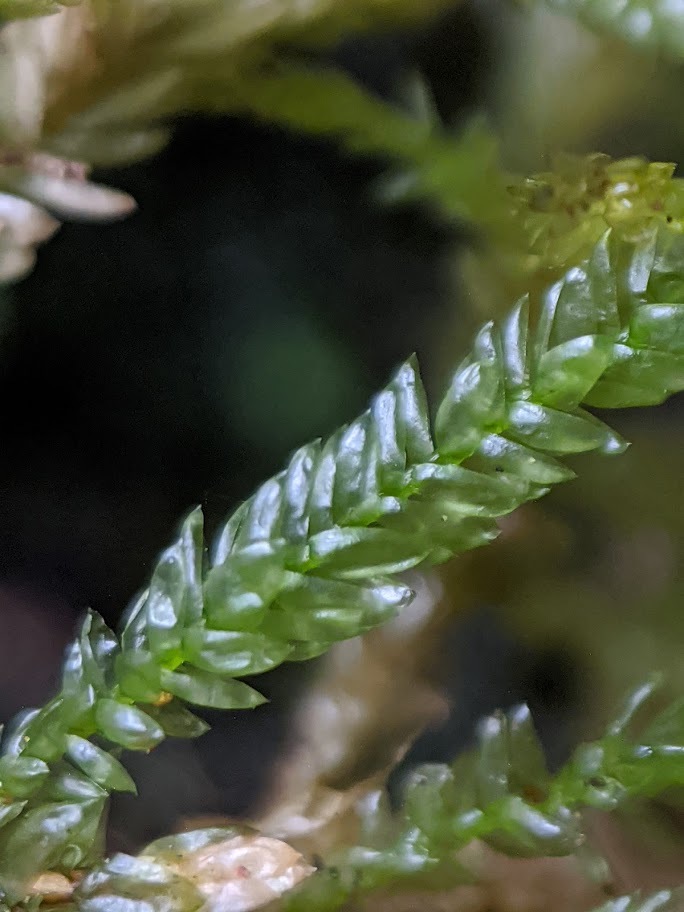Camptochaete excavata
(Taylor) A.JaegerWefts on rocks, logs and tree trunks. Secondary stems 3–8 cm long; central strand indistinct. Stipes weakly to moderately developed, 10–15 (–20) mm long. Fronds 1.6–4.5 cm wide, densely to loosely irregularly pinnately branched. Stipe leaves patent, well-separated, broadly ovate to orbicular, 0.8–0.9 mm long, 1.1–1.2 mm wide, strongly concave, sooth when moist, twisted when dry; apex obtuse, mucronate; margins entire, hooded at apex. Frond axis leaves patent, imbricate, terete-foliate to complanate, broadly ovate, 0.6–1.3 mm long, (0.6–) 0.8–1.75 mm wide, strongly concave, smooth when moist, smooth or somewhat collapsed-wrinkled or striate-wrinkled when dry; apex mucronate; margins entire or weakly denticulate, incurved near apex. Branch leaves 0.34–1 mm long, 0.4–0.9 mm wide. Costa weak, double and failing below midleaf or absent. Mid-laminal cells short-linear, 22–55 μm long, 5–7.5 μm wide; laminal cells near the apex (10–) 12–35 long, 5–8 μm wide; alar cells quadrate to rectangular, 1.5–20 μm long, 1.5–6 μm wide, forming a group that extends c. 6–8 cells toward apices and 8–10 cells wide. Seta 10–11 mm long, reddish-brown, smooth. Capsule horizontal, shortly cylindric or oblong, straight, c. 2 mm long. Operculum rostrate, to c. 0.8 mm long.
EGL. Known in Victoria by a single record in warm-temperate rainforest on Harrisons Creek near the New South Wales border east of Mallacoota. Also QLD, NSW and ACT. Papua New Guinea.
 Spinning
Spinning
